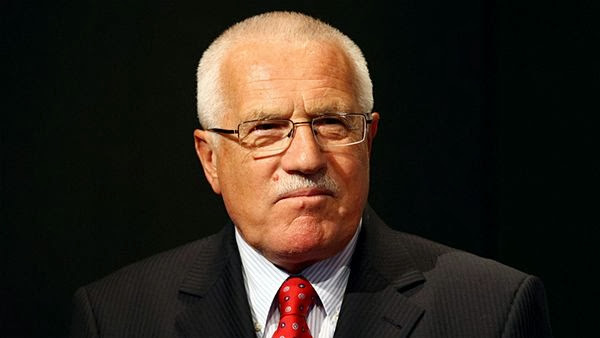As Country Club Republicans Link Up With The Democratic Ruling Class,
Millions Of Voters Are Orphaned
By Angelo Codevilla
On January 1, 2013 one third of Republican
congressmen, following their leaders, joined with nearly all Democrats to
legislate higher taxes and more subsidies for Democratic constituencies. Two
thirds voted no, following the people who had elected them. For generations, the
Republican Party had presented itself as the political vehicle for Americans
whose opposition to ever-bigger government financed by ever-higher taxes makes
them a “country class.” Yet modern Republican leaders, with the
exception of the Reagan Administration, have been partners in the expansion of
government, indeed in the growth of a government-based “ruling class.” They
have relished that role despite their voters. Thus these leaders gradually
solidified their choice to no longer represent what had been their
constituency, but to openly adopt the identity of junior partners in that
ruling class. By repeatedly passing bills that contradict the identity of
Republican voters and of the majority of Republican elected
representatives, the
Republican leadership has made political orphans of millions of Americans. In
short, at the outset of 2013 a substantial portion of America finds itself
un-represented, while Republican leaders increasingly represent only themselves.
By the law of supply and demand, millions of
Americans, (arguably a majority) cannot remain without representation.
Increasingly the top people in government, corporations, and the media collude
and demand submission as did the royal courts of old. This marks these
political orphans as a “country class.” In 1776 America’s country class
responded to lack of representation by uniting under the concept: “all men are
created equal.” In our time, its disparate sectors’ common sentiment is more
like: “who the hell do they think they are?”
The ever-growing U.S.
government has an edgy social, ethical, and political character. It is
distasteful to a majority of persons who vote Republican and to independent
voters, as well as to perhaps one fifth of those who vote Democrat. The
Republican leadership’s kinship with the socio-political class that runs modern
government is deep. Country class Americans have but to glance at the Media to
hear themselves insulted from on high as greedy, racist, violent, ignorant
extremists. Yet far has it been from the Republican leadership to defend them.
Whenever possible, the Republican Establishment has chosen candidates for
office – especially the Presidency – who have ignored, soft-pedaled or given
mere lip service to their voters’ identities and concerns.
Thus public opinion polls
confirm that some two thirds of Americans feel that government is “them” not
“us,” that government has been taking the country in the wrong direction, and
that such sentiments largely parallel partisan identification: While a majority
of Democrats feel that officials who bear that label represent them well, only
about a fourth of Republican voters and an even smaller proportion of
independents trust Republican officials to be on their side. Again: While the
ruling class is well represented by the Democratic Party, the country class is
not represented politically – by the Republican Party or by any other. Well or
badly, its demand for representation will be met.
Representation is the
distinguishing feature of democratic government. To be represented, to trust
that one’s own identity and interests are secure and advocated in high places,
is to be part of the polity. In practice, any democratic government’s claim to
the obedience of citizens depends on the extent to which voters feel they are
party to the polity. No one doubts that the absence, loss, or perversion of
that function divides the polity sharply between rulers and ruled.
Representation can be
perverted. Some regimes (formerly the Communists, and currently the Islamists)
allow dissent from the ruling class to be represented only by parties approved
by the ruling class. Also, in today’s European Union the ruling class’ wide
spread and homogeneity leaves those who do not like how their country is run
with no one to represent them. Though America’s ruling class is neither as
narrow as that of Communist regimes nor as broadly preclusive as that of the
European Union, the Republican leadership’s preference for acting as part of
the ruling class rather than as representatives of voters who feel set upon has
begun to produce the sort of soft pre-emption of opposition and bitterness between rulers and ruled that
occurs necessarily wherever representation is mocked.
To see how America’ country
class can be represented, let us glance at how the current division of American
politics into a ruling class and a country class came about and why it is
inherently unstable.
Ins and
Outs
Those who attribute the
polarization of American politics to the partisan drawing of congressional
districts at the state level have a point: The Supreme Court’s decision in Baker v. Carr (1962)
inadvertedly legalized gerrymandering by setting “one man one vote” as the sole
basis of legitimacy for drawing legislative districts. Subsequent judicial
interpretations of the 1965 Voting Rights Act demanded that districts be
drawn to produce Congressmen with specific features. No surprise then that
Democratic and Republican legislatures and governors, thus empowered, have
drawn the vast majority of America’s Congressional districts to be safe for
Democrats or Republicans respectively. Such districts naturally produce
Congressmen who represent their own party more than the general population.
This helped the parties themselves to grow in importance. But the U.S. Senate
and state governments also have polarized because public opinion in general
has.
Political partisanship became
a more important feature of American life over the past half-century largely because
the Democratic Party, which has been paramount within the U.S. government since
1932, entrenched itself as America’s ruler, and its leaders became a ruling
class. This caused a Newtonian “opposite reaction,” which continues to gather
force.


















